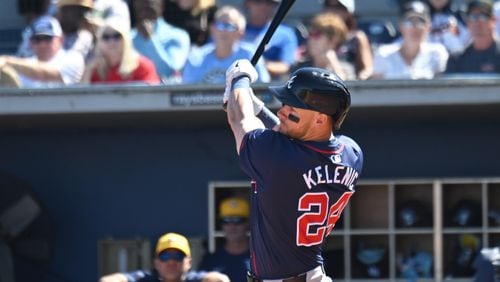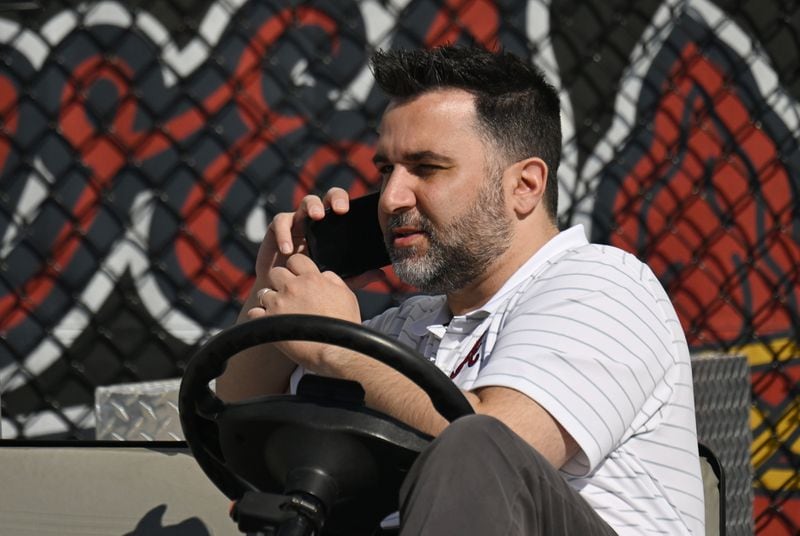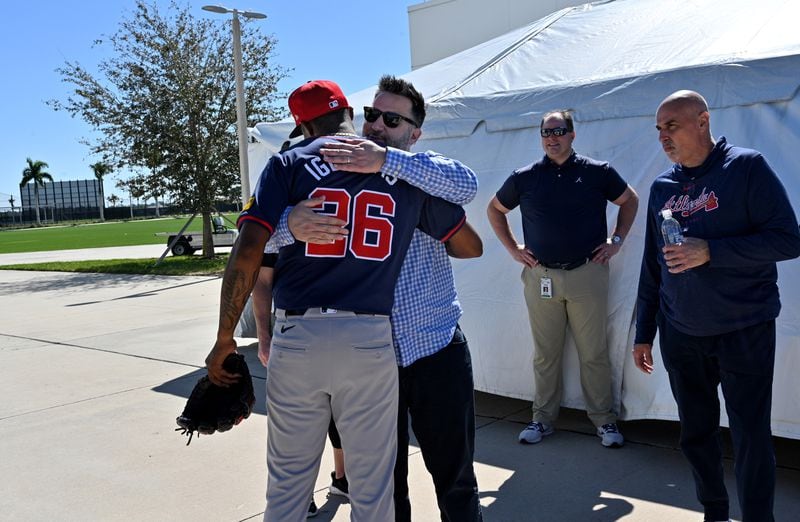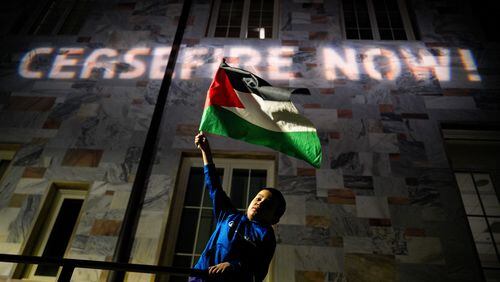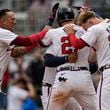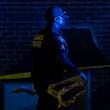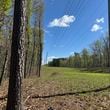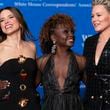Editor’s note: This is the first in a series previewing the 2024 Atlanta Braves. The AJC will look into the keys for the team this season and hear from several of the top players as the countdown to Thursday’s season opener continues.
In the 2022 season, Jarred Kelenic hit .141 in 163 at-bats with the Mariners and was twice optioned to Triple-A during the season.
Far away in Atlanta, Braves general manager Alex Anthopoulos identified him as a potential gem, talented but untapped. But when Anthopoulos tried to engage the Mariners in trade talks that offseason, he learned that they saw him similarly and were unwilling to part with a player who had once been the sixth overall pick of the 2018 draft (by the Mets). If temporarily, Anthopoulos relented.
“Then he gets off to an unbelievable start (in 2023) and you’re thinking, ‘Wow, maybe I should have tried a little harder,’” Anthopoulos told The Atlanta Journal-Constitution.
Kelenic tailed off, though, and Seattle grew more open to dealing the once-prized Kelenic. And when the Braves begin the regular season Thursday in Philadelphia, they’ll do so with Kelenic in left field. About a year after its initial inquiry, the club ultimately acquired him in December in a trade involving four other players (two with contracts that the Mariners wanted to unload) and a reported $4.5 million payment from Seattle.
It was another trademark deal for Anthopoulos, who has continually fortified the Braves roster with acquisitions that have seemingly come out of left field (literally so, in this case) but make sense after the fact.
How and why did Anthopoulos decide on Kelenic as the lone position player that the club pursued in this offseason?
The one known as AA provided answers to the AJC and in the process offered a glimpse into the methodology of one of the sport’s top executives.
“I think the biggest thing for us is that we do the work on the player and the fit and hopefully we get the ability right,” Anthopoulos said. “We’re not going to bat 1.000.”
Going into the offseason, left field was clearly the lone field position where the Braves had a need. Not just any left fielder would do, though. Anthopoulos had qualifications.
He wanted a left-handed bat to balance out the righty-heavy lineup, preferably one with potential for improvement (or, if you must, “upside”). He wanted someone who was an above-average defender and who could also play center field. He wanted a younger player whose contract, as is the budget-conscious Anthopoulos’ wont, was under club control for at least a few years. And, of course, he had to be a fit for the clubhouse.
It’s easier to find a player with a couple of those attributes but not all, like a left-handed hitter who doesn’t defend well or an older left fielder who can hit but only has a year or two years left on his contract.
“Normally, those guys are top prospects,” Anthopoulos said. “And he was.”
Kelenic was the lone player to emerge from the funnel and, not unimportantly, was available, which Anthopoulos learned in communications with Seattle early in the offseason. After hitting .297 with 10 home runs in 165 at-bats, he dropped to .217 with one home run in his final 207 at-bats and struck out with greater frequency. He missed almost two months of the season when he broke his foot kicking a water cooler after a ninth-inning strikeout.
The two sides “went back and forth for a while,” Anthopoulos said, trying to figure out what a deal would look like. To Anthopoulos, the onus was on the Braves to create an attractive package.
“Because, again, Seattle, it’s not like (Kelenic) was on an expiring contract or he’s out of options or things like that,” he said, citing factors that might motivate a team to trade a player. “They didn’t have to trade him by any stretch.”
As such and because he says trades are “very hard” to execute, Anthopoulos was prepared for the trade to not happen.
“We never go into an offseason saying ‘We have to do X,’” Anthopoulos said. “It’s more like, ‘We would like to.’”
To make the trade work for the Mariners, Anthopoulos met a significant need of theirs, picking up the contracts of pitcher Marco Gonzalez and first baseman Evan White to lighten Seattle’s payroll. Both were acquired with the intent to flip them in secondary trades, which Anthopoulos did days later.
“We took on contracts to get access to the player,” Anthopoulos said. “There wasn’t any more to it than that.”
The final piece of the deal, he said, was agreeing on the size of the Mariners’ payment. He remembered being at his home office when the deal was completed, ending a process that took several weeks. It was announced late Dec. 3, a Sunday.
Had the trade not happened, Anthopoulos said that the team had been prepared to go into 2024 with Vaughn Grissom in left, with the middle infielder going to play the position in winter ball in Puerto Rico. (After the Kelenic deal, Grissom was sent to Boston as a principal in the trade that brought pitcher Chris Sale to the Braves.)
“Ideally, we wanted a left-handed bat, but we really believed in (Grissom’s) ability to hit,” Anthopoulos said.
Anthopoulos does not hide that this is a risk. Kelenic can crush the ball – he hit a 482-foot bomb at Wrigley Field last April that was the fifth-longest home run in the majors last season – but his strikeout rate (31.7%) would have been the fourth highest in baseball had he had enough plate appearances to qualify. In almost 900 career at-bats, his average is .204.
But with a lineup that just set the major-league single-season slugging percentage record, it made sense to Anthopoulos to take the chance. His thinking is that, in the Braves’ stable environment and without the pressure of hitting in the middle of the order, Kelenic could thrive.
“There’s times that you bank on the upside or you’re shooting for upside, and there’s some times where you’re banking on floor, things like that,” Anthopoulos said.
The 24-year-old Kelenic is best viewed as a calculated gamble. He may not work out as planned. That wouldn’t necessarily make it a bad decision, though. No one bats 1.000, even Anthopoulos.
If Kelenic doesn’t make progress, then the Braves will still have an effective defensive left fielder with occasional power. (And recent addition Adam Duvall could also be a possibility.) But if it works out as Anthopoulos hopes, the Braves would have a staggering outfield of Ronald Acuña Jr. in right, Michael Harris in center and Kelenic in left. The oldest of the three is Acuña at 26 and all are under club control at least through 2028 (Harris is through 2032).
“Obviously, we’re worried about ‘24 and we want to win the World Series like everyone else,” Anthopoulos said. “But we’re also worried about the sustainability part. It’s just a rare opportunity for us to get someone with that type of ceiling, that type of upside.”
Credit: HYOSUB SHIN / AJC
Credit: HYOSUB SHIN / AJC
Credit: HYOSUB SHIN / AJC
Credit: HYOSUB SHIN / AJC
About the Author
